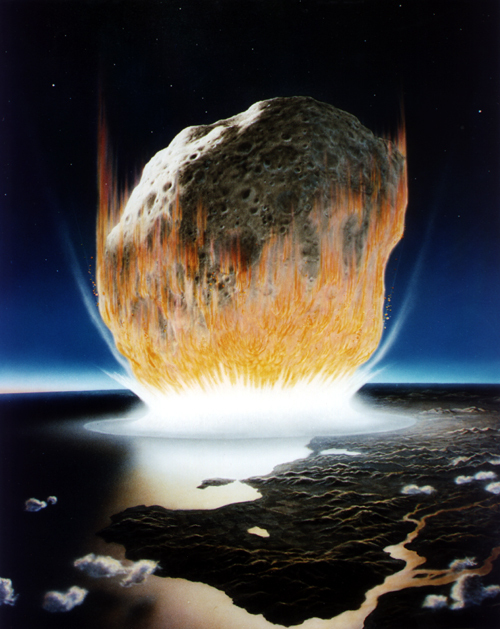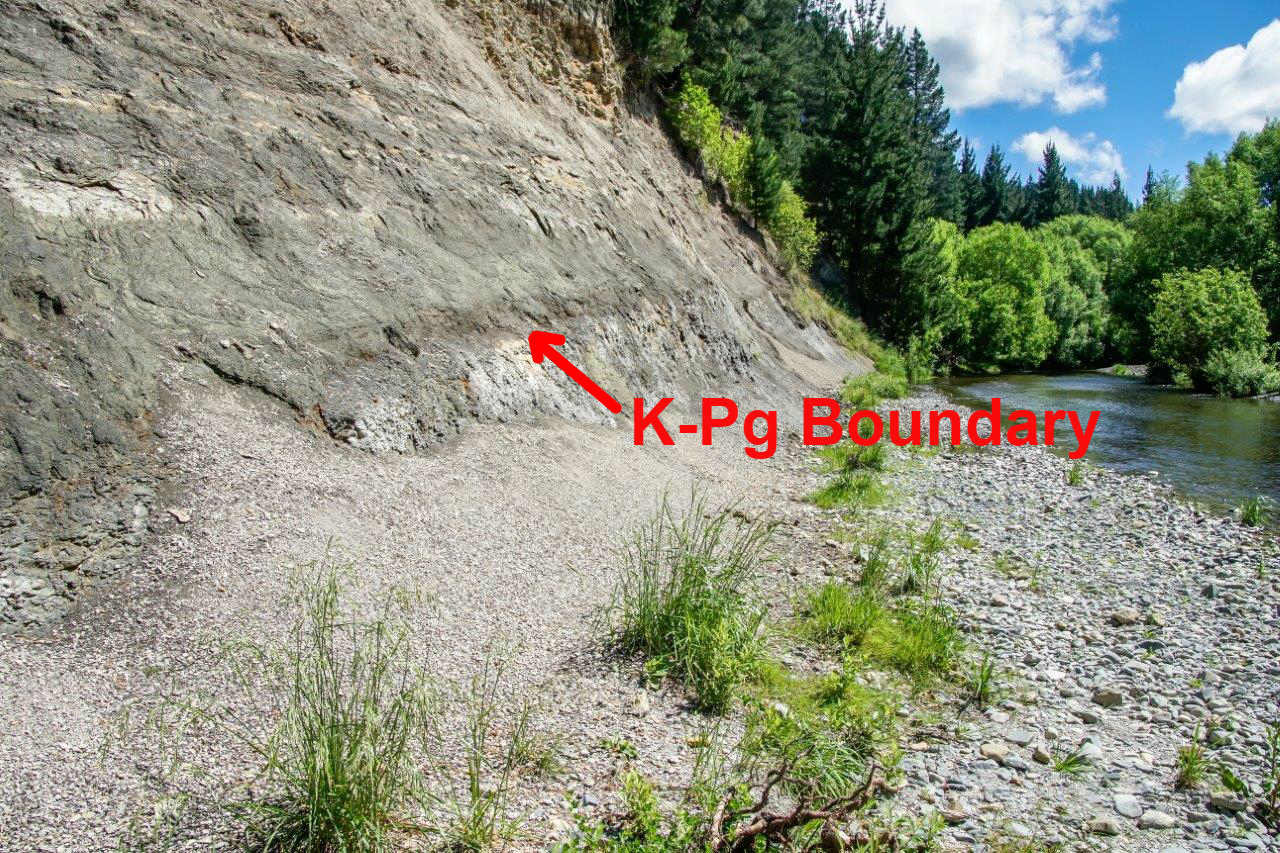Thanks to Hollywood, most people are aware that 66 million years ago a meteorite hit the Earth near the town of Chicxulub on Mexico's Yucatan Peninsula. It was a catastrophe that led to the extinction of more than half of all the species alive at the time.

We know about this extinction event because there is a huge change in the fossil communities of plants and animals recorded in the rocks.
Amongst the animals that vanished forever at this precise geological moment are the giant marine reptiles (the mosasaurs and plesiosaurs), the flying pterosaurs and of course the dinosaurs (well, all but the birds). A whole group of molluscs, the belemnites and ammonites, also became extinct.
The moment of impact is visibly preserved in some marine sediments. This manifestation of the impact is known as the K-Pg boundary (also called the Cretaceous-Paleogene boundary, or K-T boundary). It marks the end of the Cretaceous Period, the last period of the Mesozoic Era, and the beginning of the Paleogene Period, the first period of the Cenozoic Era.
The South Island of New Zealand has one of the world's best records of the Cretaceous-Paleogene boundary. Eight sites in the northern South Island provide by far the best Southern Hemisphere record of how this catastrophe affected land plants and marine animals.
One of these is found at the Waipara River where Canterbury Museum has been collecting fossil marine reptiles and birds for more than 150 years. Some of these fossils are currently on display in our exhibition Ancient New Zealand: Squawkzilla and the Giants.
The K-Pg boundary shows as a dark line in the exposed sediments on the Waipara River bank. The grey mudstones that predate the extinction event contrast starkly with the sulphurous green rocks above. The plant fossils in the layer immediately above the boundary tell a very significant story; they are mainly from shade-tolerant ferns, suggesting the meteorite's impact caused a period of darkness.

The extinction of the belemnite and ammonite mollusc groups holds a stark message for the world today as it is thought the embryos of these molluscs could not survive the acidification of the oceans that followed the meteorite's impact. Modern human-induced climate change is already making the oceans more acidic at an alarming rate; commercial crab harvests in the northern hemisphere are in decline and studies have shown that the acidic water is reducing the thickness of crab shells.





